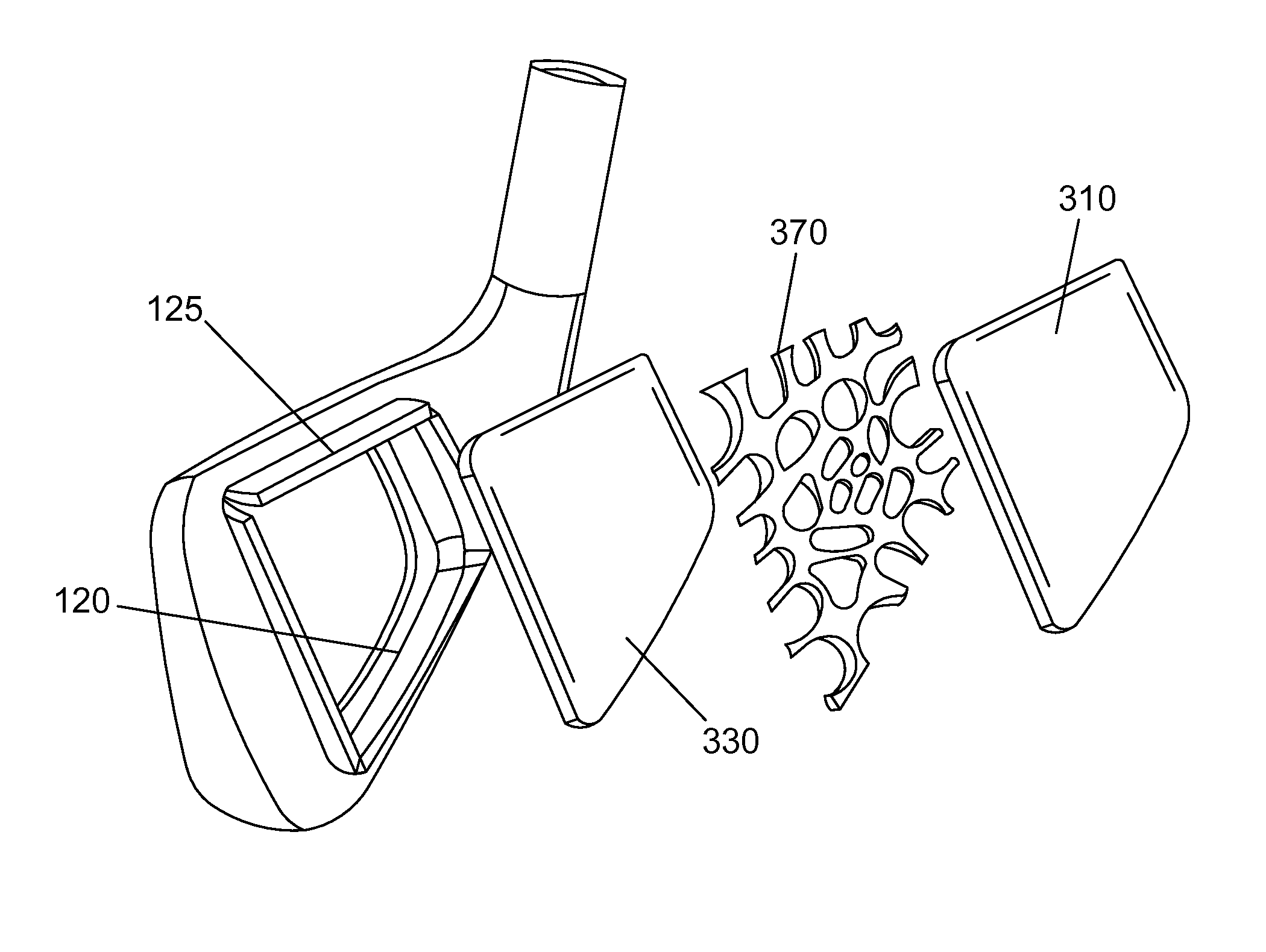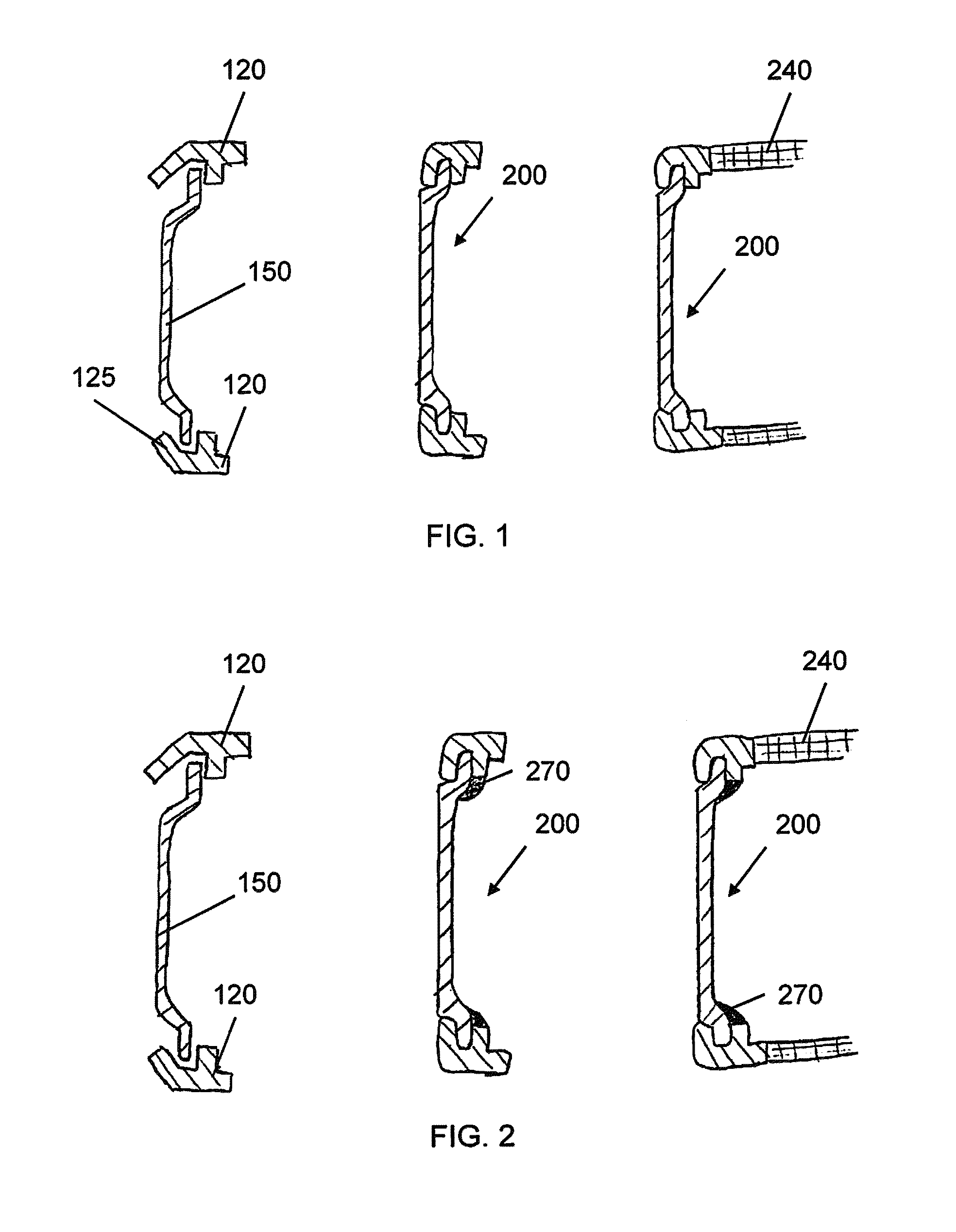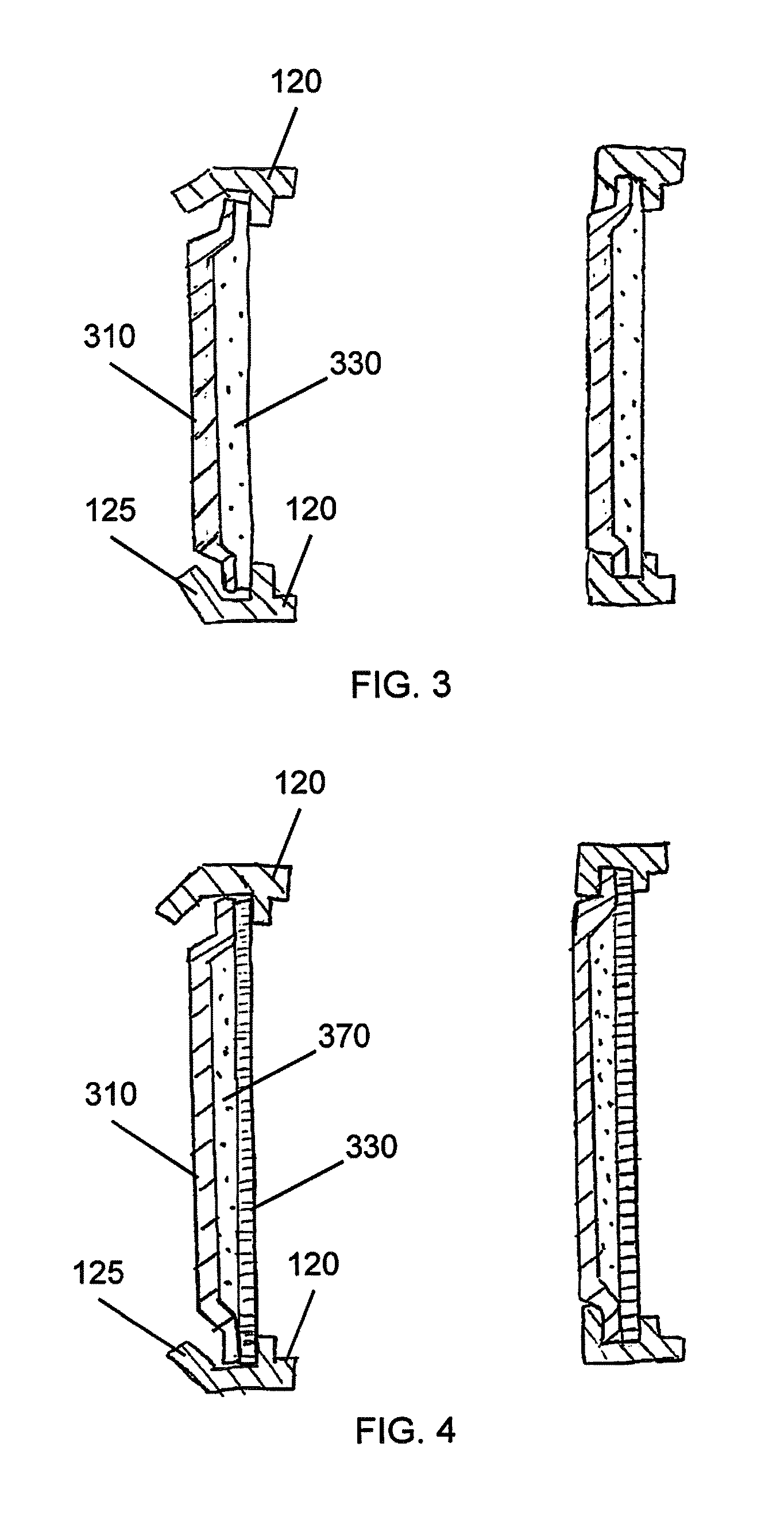Golf club head comprising multiple materials
a golf club and multiple material technology, applied in the field of golf club heads, can solve the problems of dissipation of a large amount of energy from the impact, many stress on the transitional portions of the club head, and many stress on the face/crown interface, so as to improve the impact resistance, and improve the effect of driving length
- Summary
- Abstract
- Description
- Claims
- Application Information
AI Technical Summary
Benefits of technology
Problems solved by technology
Method used
Image
Examples
Embodiment Construction
[0029]The invention provides golf club heads, including drivers, hybrids, and irons, having combinations of materials. Typically, the club head includes one or more inserts mechanically coupled to a frame. The insert may comprise a single material, such as titanium, or the inserts may comprise a combination of materials such as a combination of metals, a combination of metal and an elastic material, or a sandwiched structure. The invention additionally provides methods for fabricating a club by incorporating the inserts into a frame, for example by using a cold forging process by which the frame and the insert are mechanically coupled.
[0030]Exemplary techniques for mechanically coupling an insert to a frame are shown in FIGS. 1 and 2. The frame is generally a support structure, having tabs or flanges that can be caused to join with an insert or other structural member. FIG. 1 shows a cut-away illustration of a frame 120 being coupled to an insert 150. As shown in FIG. 1, the top and...
PUM
 Login to View More
Login to View More Abstract
Description
Claims
Application Information
 Login to View More
Login to View More - R&D
- Intellectual Property
- Life Sciences
- Materials
- Tech Scout
- Unparalleled Data Quality
- Higher Quality Content
- 60% Fewer Hallucinations
Browse by: Latest US Patents, China's latest patents, Technical Efficacy Thesaurus, Application Domain, Technology Topic, Popular Technical Reports.
© 2025 PatSnap. All rights reserved.Legal|Privacy policy|Modern Slavery Act Transparency Statement|Sitemap|About US| Contact US: help@patsnap.com



